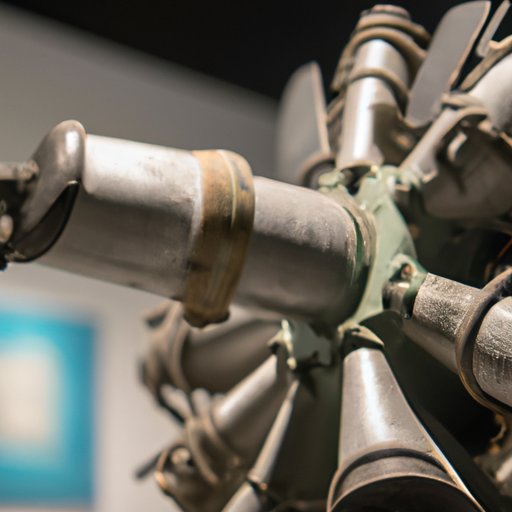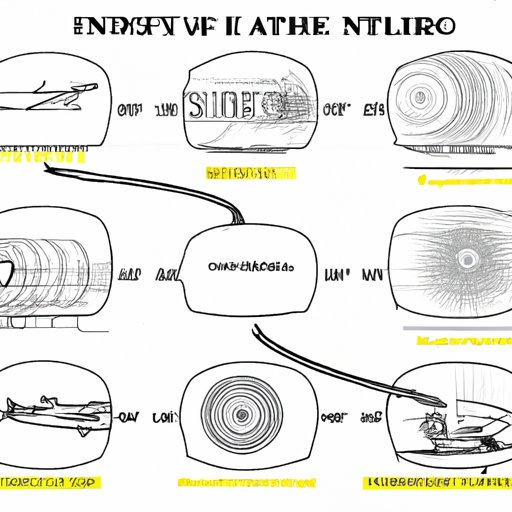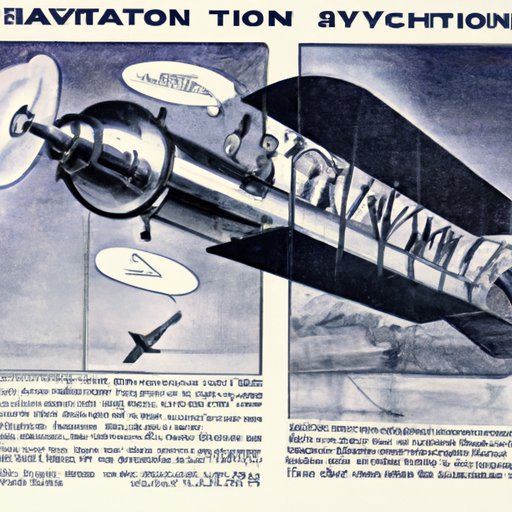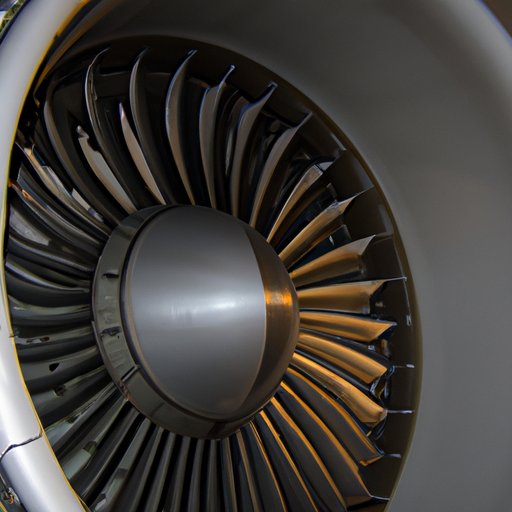Introduction
A jet engine is an internal combustion engine that utilizes a turbine to generate thrust by accelerating a jet of hot exhaust gases. It is used in aircraft to provide thrust for propulsion, and is typically the most efficient and powerful form of aircraft engine available. This article will explore the history of the jet engine, from its invention to its evolution over time and its impact on air travel.
A Historical Analysis: Examining the Inventions and Innovations that Led to the Jet Engine
Before the invention of the jet engine, there were several early pioneers in the field of aviation who made significant contributions to the development of the technology. One of these was Sir George Cayley, an English engineer who designed and built the first successful glider in 1853. His work laid the foundation for the development of heavier-than-air flight, and he is often referred to as “the father of aeronautics”. Another important figure in aviation history was Otto Lilienthal, a German inventor who developed and tested a series of hang gliders in the late 19th century. His work provided the basis for the Wright brothers’ successful powered flight in 1903.
In addition to these early innovators, many other famous inventors have contributed to the development of the jet engine. One of the most notable is Frank Whittle, an English aviator and engineer who invented the turbojet engine in 1930. His design formed the basis for modern jet engines and he is often credited with being the “father of the jet age”. Other prominent figures in the history of the jet engine include Hans von Ohain, an aeronautical engineer from Germany who developed the first operational turbojet engine in 1939; and Sir Roy Fedden, an English aeronautical engineer who developed the first axial-flow turbojet engine in 1941.

The Early Years of Aviation and How the Jet Engine Changed Everything
The invention of the jet engine had a profound effect on the development of modern aircraft. Before the advent of the jet engine, aircraft relied on piston engines, which could only generate relatively low levels of thrust. This limited the speed and range of aircraft, making long-distance air travel impractical. The introduction of the jet engine changed all this, allowing planes to fly faster and farther than ever before.
The invention of the jet engine also had a major impact on international air travel. The increased speeds enabled by jet engines allowed passengers to travel between distant cities in much shorter times than ever before. This, combined with improved safety standards and the increasing affordability of air travel, led to a dramatic increase in the number of people travelling by air.

A Timeline of Events: Tracing the Development of the Jet Engine from Concept to Reality
The development of the jet engine is marked by several key milestones and advancements in technology. In 1930, Frank Whittle patented his design for the turbojet engine, which formed the basis for modern jet engines. In 1939, Hans von Ohain developed the first operational turbojet engine, and in 1941 Sir Roy Fedden developed the first axial-flow turbojet engine. In 1947, the first jet airliner, the de Havilland Comet, went into service, ushering in the era of commercial jet travel.
In 1953, the Boeing 707 became the first jetliner to go into mass production. This ushered in a new era of air travel, as airlines began to rely increasingly on jet aircraft for their operations. In the decades since, advances in technology have continued to improve the performance of jet engines, leading to higher speeds, greater efficiency, and lower emissions.
Jet Engines Through the Ages: From Invention to Present Day
Since their invention, jet engines have gone through a process of continual refinement and improvement. Modern jet engines are significantly more powerful and efficient than their predecessors, with some designs capable of producing up to 50,000 pounds of thrust. They are also much quieter and emit far fewer pollutants than older piston engines.
Today, jet engines are used in a variety of applications, including military aircraft, commercial aircraft, and even spacecraft. They are also used in drones, helicopters, and other unmanned aerial vehicles. In addition, they are being used in a growing number of civilian applications, such as powering cruise ships and high-speed trains.

Pioneers in Flight: A Look at the Key Figures Behind the Invention of the Jet Engine
The invention of the jet engine was made possible by the efforts of several key figures in the history of aviation. Frank Whittle is widely regarded as the “father of the jet age”, and his design formed the basis for modern jet engines. Hans von Ohain is credited with developing the first operational turbojet engine, and Sir Roy Fedden is credited with developing the first axial-flow turbojet engine. These pioneers laid the groundwork for the development of the jet engine, paving the way for modern air travel.
Aeronautical Advances: How Jet Engines Revolutionized Air Travel
The invention of the jet engine revolutionized air travel in a number of ways. The increased power and range enabled by jet engines allowed airlines to fly longer distances in less time, resulting in faster and more convenient travel. In addition, the increased efficiency of jet engines has resulted in lower fuel costs, making air travel more affordable.
The introduction of jet engines also had a major impact on air travel safety. The greater power of jet engines allowed aircraft to climb to higher altitudes more quickly, reducing the risk of in-flight turbulence and other hazards. The improved reliability of jet engines also helped to reduce the incidence of mechanical failures, further increasing the safety of air travel.

An Overview of the Jet Engine: From Design to Implementation
Jet engines are composed of several key components, including an intake, a compressor, a combustion chamber, a turbine, and an exhaust nozzle. The intake draws in air, which is compressed by the compressor and mixed with fuel in the combustion chamber. The burning fuel heats the air, creating high-pressure exhaust gases which are expelled through the exhaust nozzle, generating thrust. The turbine extracts energy from the exhaust gases, driving the compressor and providing additional thrust.
Jet engines come in a variety of types, including turbojets, turbofans, turboprops, and ramjets. Turbojets are the most common type of jet engine, and are used in most commercial aircraft. Turbofans are similar to turbojets but feature a larger fan at the front, allowing them to generate more thrust while consuming less fuel. Turboprops are used in smaller aircraft, and use a propeller to generate thrust. Ramjets are used in supersonic aircraft, and rely on the forward motion of the aircraft to compress the incoming air.
Conclusion
The invention of the jet engine has revolutionized air travel, making it faster, safer, and more convenient than ever before. Its development was made possible by the efforts of several pioneers in the field of aviation, including Sir George Cayley, Otto Lilienthal, Frank Whittle, Hans von Ohain, and Sir Roy Fedden. Today, jet engines are used in a variety of applications, from commercial airliners to unmanned aerial vehicles. The jet engine is a remarkable example of human ingenuity, and its invention has had a profound impact on the world we live in.
(Note: Is this article not meeting your expectations? Do you have knowledge or insights to share? Unlock new opportunities and expand your reach by joining our authors team. Click Registration to join us and share your expertise with our readers.)
